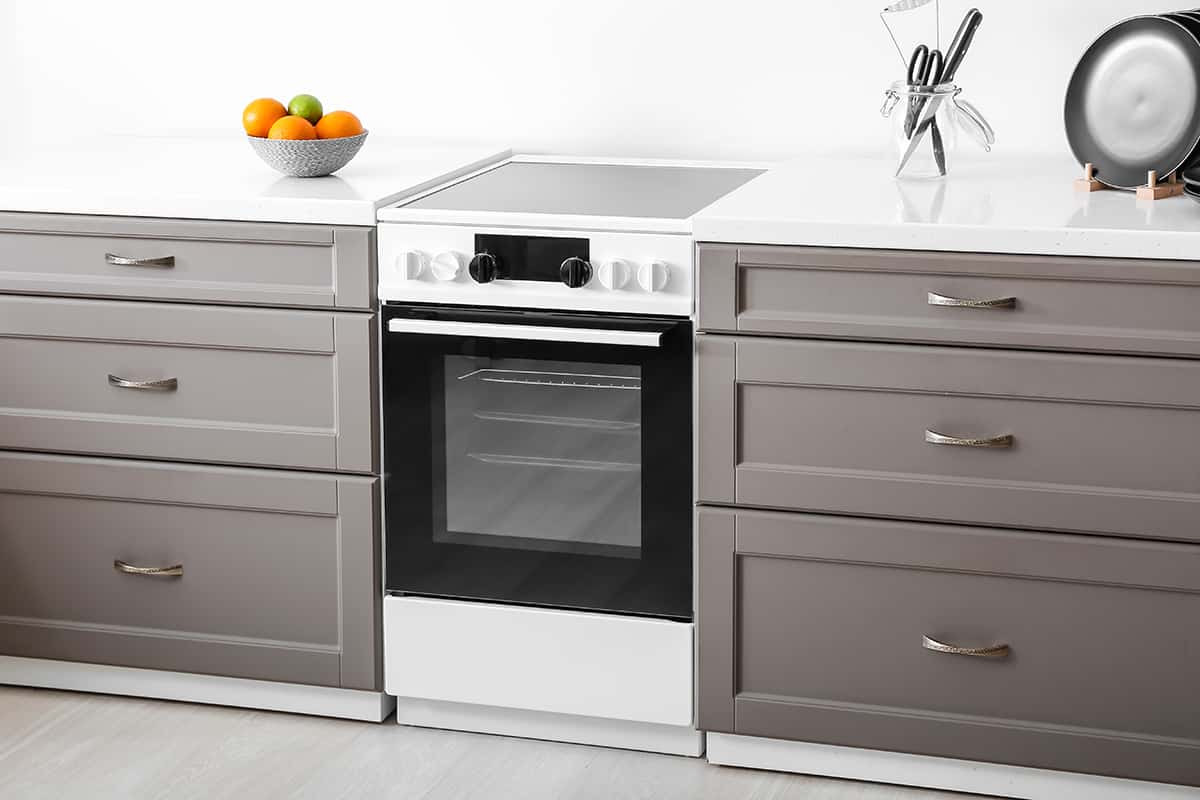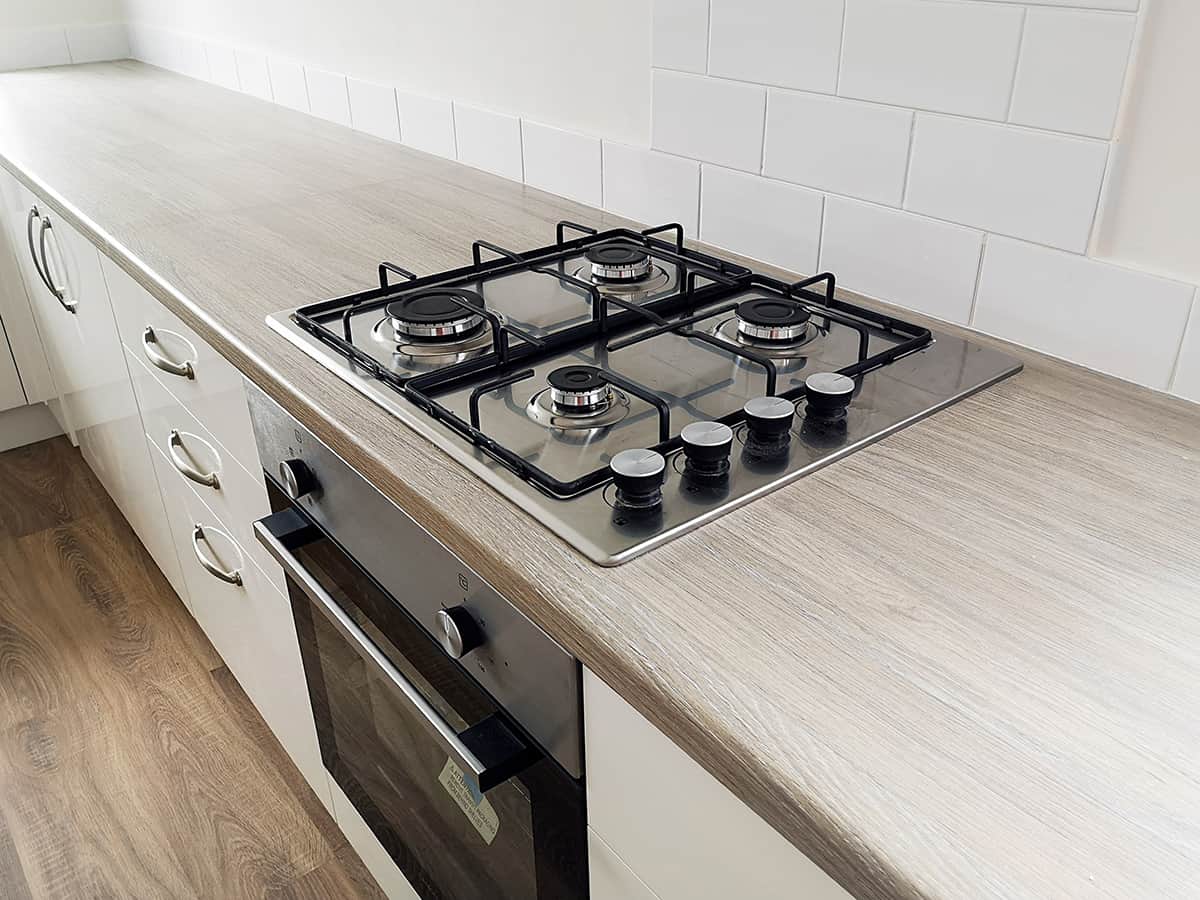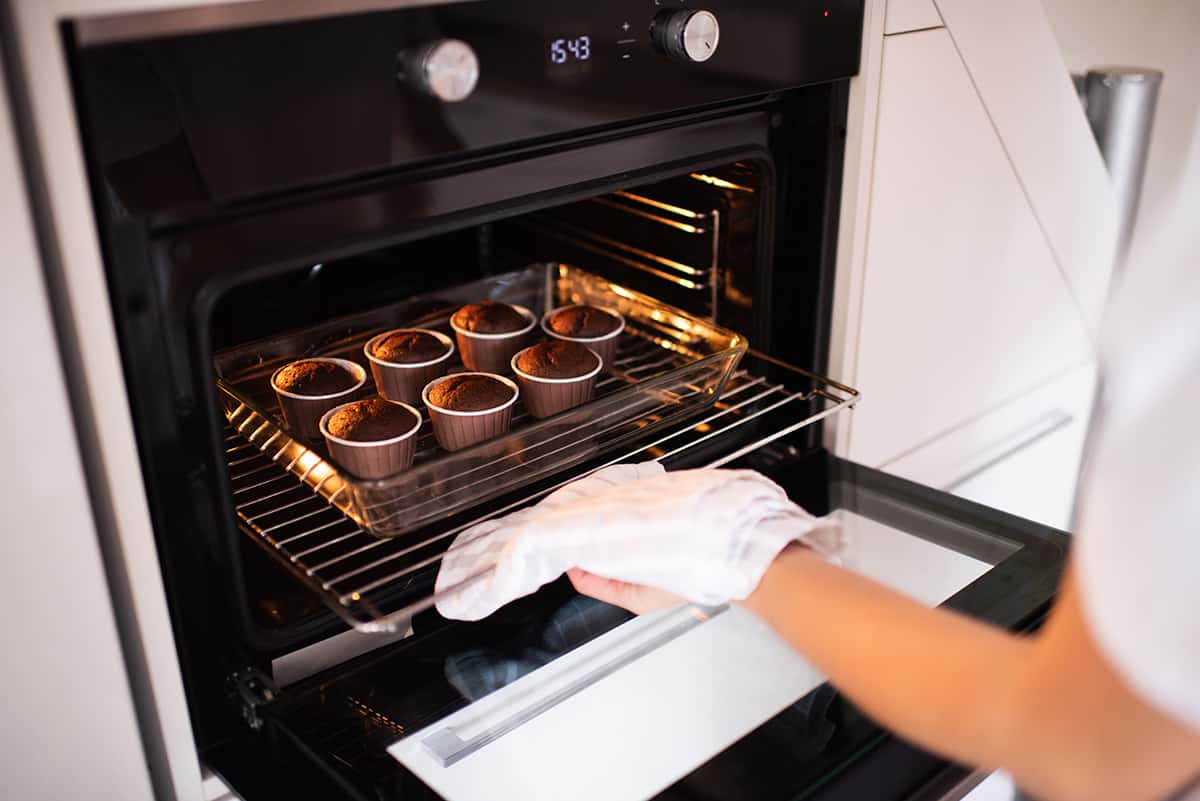When we bake our favorite treats, the oven plays a big role in the result. Two popular types of ovens are electric and gas. The debate about which one is better, especially for baking, has been around for a while.
In a nutshell, electric ovens produce crispier baked goods, whereas gas ovens specialize in maintaining moisture. Additionally, electric ovens provide more even heat distribution, whereas gas ovens heat up faster, saving time and energy.
In this article, we’ll explore the differences between electric and gas ovens, how they affect baking, their pros and cons, and the impact on your baked goods.
Unraveling the Basics of Oven Types
Electric and gas ovens have a common goal: to heat our food. But they use different methods to reach that goal.
What is an electric oven?

An electric oven is a type of oven that uses electricity to produce heat. When you turn it on, electricity flows into a special element in the oven. This element gets hot, and that’s how the oven heats up.
Imagine it like a giant electric kettle; only instead of boiling water, it’s warming air. And since electric ovens don’t need a gas line, you can put them anywhere there’s a power outlet.
What is a gas oven?

A gas oven, on the other hand, uses natural gas or propane to create heat. When you turn on a gas oven, the gas flows into a burner and is ignited, producing heat. Think of it as a controlled campfire enclosed in a metal box.
The Basics of Heat Distribution
If you thought baking was just about mixing ingredients and popping them in the oven, you’re in for a surprise.
Heat distribution is a fancy term for how heat spreads inside your oven. In baking, heat distribution is vital because it affects how your food cooks. If heat spreads evenly, your food will bake evenly. If not, you might end up with a cake that’s burnt on the outside but still raw in the middle. Yuck!
In electric ovens, heat comes from electric elements at the top and bottom. When these elements heat up, they warm the air inside the oven. Since warm air rises, the heat moves upwards, but then it hits the top of the oven and spreads out, creating an even heat distribution.
In gas ovens, the heat comes from a burner at the bottom. The heat rises from the burner, warming the air inside the oven. But because there’s only one heat source, the heat doesn’t always spread out evenly and can create “hot spots” and, unfortunately, “cold spots.”
In the end, the type of oven you use can have a big impact on your baking. The way heat distributes in your oven affects how evenly your food cooks.
The Pros and Cons of Electric Ovens
Electric ovens have their strengths and weaknesses. Let’s explore them to understand why some people choose electric ovens for their baking needs.
Pros
- Efficiency: When you turn on an electric oven, the heat spreads out evenly, making sure all parts of your food get cooked at the same rate. This is especially important in baking, where uneven cooking can lead to disasters like a half-baked cake or burnt cookies.
- Energy consumption: Electric ovens retain heat well, which means they don’t have to work as hard to maintain the set temperature. So, while they might take a little longer to heat up initially, they can be more efficient in the long run.
- Durability: Electric ovens are known for their durability. They have fewer moving parts than gas ovens, which means there’s less that can go wrong. If you take good care of your electric oven, it can last you many years.
Cons
- Cost of electricity: The cost-effectiveness of an electric oven can depend on the price of electricity in your area. In some places, electricity is quite expensive, which can make running an electric oven costly. But in areas where electricity is cheap, an electric oven can be a cost-effective choice.
- Repair costs: The cost of replacement parts for an electric stove oven are generally higher than those same parts for a gas oven.
- Unusable during power outages: Any wired electronic will not function during a blackout, and electric ovens are no different. When the lights go out, your cookies will be left on the back burner until further notice.
The Pros and Cons of Gas Ovens
Just like their electric counterparts, gas ovens have their unique set of pros and cons. Let’s take a look at why some bakers might prefer gas ovens for their creations.
Pros
- Quicker heating: Unlike electric ovens, which can take a while to reach the desired temperature, gas ovens heat up quickly. This can save you some waiting time, especially if you’re in a hurry to get your baking started.
- Better heat control: With a gas oven, you can quickly adjust the heat level by simply turning the dial and adjusting the flame’s size. This is great for recipes that require precise temperature control or frequent changes in oven temperature.
- Cheaper fuel: When it comes to energy consumption, gas ovens can be more cost-effective than electric ovens, depending on where you live. In many places, gas is cheaper than electricity, which can make operating a gas oven less expensive in the long run.
Cons
- Durability: Gas oven have more parts that can wear out over time, like the gas burner and the ignition system. Maintenance of a gas oven can be a bit more involved than with an electric oven. You’ll need to check regularly for potential gas leaks and ensure the burner is clean and working correctly.
- Heat loss: They might heat up faster, but they also lose heat quicker. This means they may need to burn more fuel to maintain the set temperature, especially for long baking times.
The Impact of Oven Type on Baking Outcomes

Choosing the right oven can be the difference between baking a showstopper and a baking flop. Let’s dive into how the type of oven you use can affect your baking results.
Electric Ovens and Baking Outcomes
Remember how we talked about the even heat distribution in electric ovens? This comes into play when you’re baking. Cakes, cookies, and pies often need even heat to bake properly. In an electric oven, you’re less likely to end up with a cake that’s burnt on one side and raw on the other.
Electric ovens also produce dry heat. This is great when you’re baking items that need to develop a nice, crispy crust. Think golden-brown cookies and pies with a beautifully baked crust.
But what about items that need a moist environment, like bread? Well, you can create this in an electric oven by adding a dish of water to the bottom rack. The heat will turn the water into steam, creating a moist environment that’s perfect for baking bread.
Gas ovens and baking outcomes
On the other hand, gas ovens naturally create a moist environment. This is great when you’re baking items that benefit from some humidity, like bread. A loaf of bread baked in a gas oven can come out with a wonderfully soft, moist crumb.
But remember those ‘hot spots’ we talked about? These can affect your baking in a gas oven. You might need to rotate your baking tray halfway through to make sure your food bakes evenly.
Don’t let this put you off, though. Many professional bakers use gas ovens and achieve great results. It just takes a bit of practice to learn how to work with your oven’s quirks.






